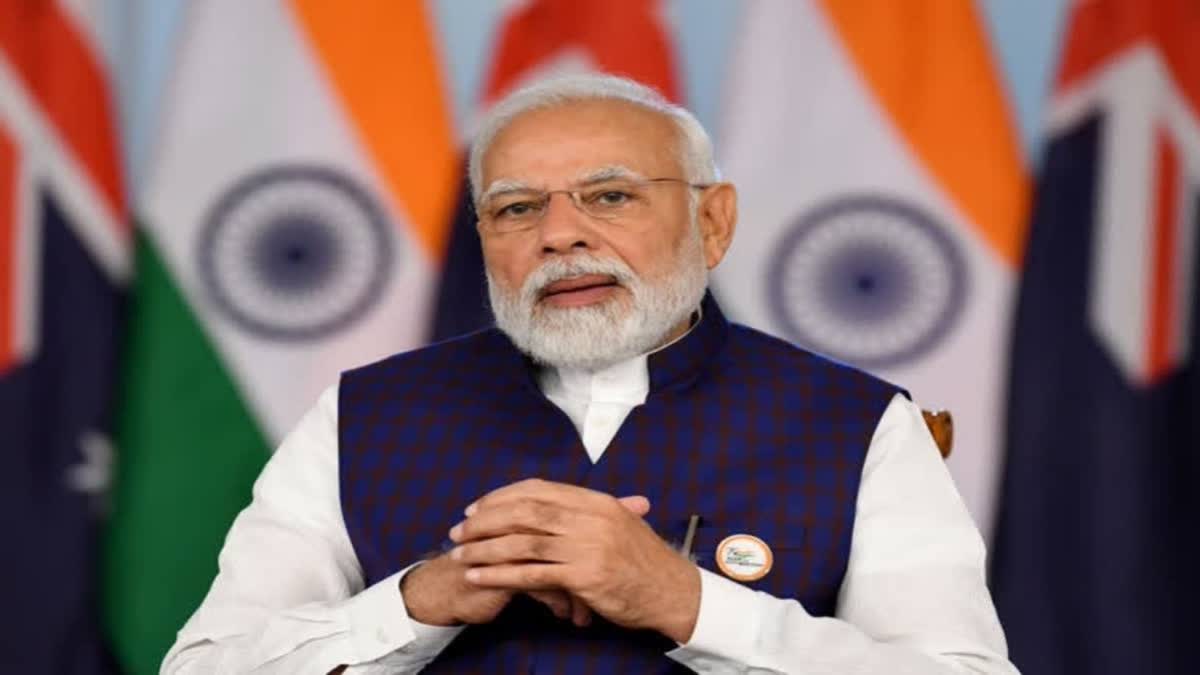New Delhi: Apart from attending the 2024 Quad summit to be hosted by US President Joe Biden in his hometown of Wilmington, Delaware, the other major event in Prime Minister Narendra Modi’s itinerary during his visit to the US starting this weekend is his address to the UN Summit of the Future.
According to a statement issued by the External Affairs Ministry on Tuesday, Modi will address the Summit of the Future at the UN General Assembly in New York on September 23.
“The theme of the Summit is ‘Multilateral Solutions for a Better Tomorrow’,” the statement reads. “A large number of global leaders are expected to participate in the Summit.”
What is the UN Summit of the Future about?
In June 2020, the 75th Anniversary of the UN was commemorated with a declaration from member states. This declaration outlined 12 overarching commitments and urged Secretary-General Antonio Guterres to provide recommendations addressing both current and future challenges. Responding to this, in September 2021, the Secretary-General released the report titled ‘Our Common Agenda’. This report served as a wake-up call, emphasising the need to accelerate the implementation of the UN’s Sustainable Development Goals (SDGs) and fulfill the commitments outlined in the UN75 Declaration.
The report identified gaps that had emerged since 2015, some of which required new intergovernmental agreements. Consequently, it proposed the convening of a Summit of the Future to establish a new global consensus, preparing for a future marked by risks and opportunities. The General Assembly appreciated the report as “rich and substantive”. The Summit was conceptualised following the UN General Assembly's Resolution 76/307, adopted in 2022, with the goal of revitalising multilateralism and strengthening international cooperation to tackle emerging crises, such as climate change, pandemics, inequality, geopolitical tensions, and technological disruptions.
“The Summit of the Future offers a chance to commit to bold new solutions,” the Summit’s website states. “It provides an opportunity to create international mechanisms that better reflect the realities of the 21st century and can respond to today’s and tomorrow’s challenges and opportunities. As a global community, we have a role in setting a better course for our world. By working together, we can achieve a safer, more peaceful, just, equal, inclusive, sustainable, and prosperous future.”
What are the key objectives of the Summit?
The Summit of the Future seeks to achieve a broad spectrum of reforms and initiatives to equip the UN and the global community with the tools and frameworks necessary to confront the evolving global landscape.
The Summit will focus on revitalising international cooperation and making global governance more inclusive and effective in solving collective problems. It will emphasise the need to protect and promote global public goods like peace, public health, economic stability, environmental sustainability, and cybersecurity.
The Summit will also discuss reforms in the UN to make the organisation more agile, responsive, and representative, considering the changing dynamics of international politics. One major component will focus on conflict prevention, sustainable peace efforts, and reforming peacekeeping operations to adapt to contemporary security challenges.
There will be a strong emphasis on implementing the goals of the Paris Agreement and working towards more ambitious climate action.
The Summit will address the governance of emerging technologies, Artificial Intelligence (AI), and data management, ensuring these advancements are aligned with human rights and development goals. Focus will also be on reducing global disparities, including those exacerbated by the COVID-19 pandemic, by promoting policies that ensure fair distribution of resources, healthcare access, and development opportunities.
Discussions will include reforms in the international financial system, ensuring that it supports sustainable development, economic stability, and poverty reduction.
A central outcome of the Summit will be a ‘Pact for the Future’.
What is the Pact for the Future expected to entail?
The Pact will be a document aimed at codifying new principles, commitments, and actions for global governance. The inter-governmentally negotiated, action-oriented Pact for the Future will have chapters on the following:
- Sustainable development and financing for development
- International peace and security
- Science, technology and innovation and digital cooperation
- Youth and future generations
- Transforming global governance
The Summit will also produce a Global Digital Compact (GDC) and a Declaration on Future Generations that will be annexed to the Pact.
What is the GDC?
The Global Digital Compact is an initiative proposed in the Secretary-General Guterres’s Common Agenda. The objective of this compact is to ensure that digital technologies are used responsibly and for the benefit of all, while addressing the digital divide and fostering a safe and inclusive digital environment. The GDC seeks to foster collaboration among governments, private sector entities, civil society organisations, and various stakeholders. This collaborative effort is centered around a set of shared principles and commitments, encompassing several critical aspects. These include connectivity, internet fragmentation, data protection, human rights online, AI regulation and digital commons.
In terms of connectivity, the GDC will aim at ensuring universal access to the internet and digital tools for all, including schools, to promote connectivity and socio-economic well-being. Coming to internet fragmentation, it will strive to prevent the division and fragmentation of the internet, thereby maintaining a unified global digital space.
For data protection, the GDC will aim at offering individuals choices regarding the use of their data and guaranteeing the protection of their privacy. Applying human rights principles in the digital realm, including safeguarding freedom of expression, privacy, and protection against discrimination and misleading content is another key aspect.
The GDC is also expected to advocate for the ethical development and use of AI in alignment with universally shared values. In terms of digital commons, it will seek to acknowledge digital technologies as a global public good and encourage their development and utilisation for the collective benefit of all.
What is the Declaration on Future Generations?
The Summit aims to adopt a declaration focused on safeguarding the interests of future generations, ensuring that today’s actions are sustainable and protective of long-term global well-being.
“Young people are catalysts for change, but they need more support,” the Summit’s website states. “Giving them a seat at the table is crucial as they hold the key to success for a sustainable future. They also have the most to lose if a breakdown persists.”
It further states that it is essential that the “decisions we make today safeguard the interests of those who have yet to be born”.
According to figures shared in the website, there are 1.2 billion young people alive today. Children and young people account for two-thirds of the world’s poor. Over 10 billion people are projected to be born before the end of this century alone.
It is in this context that the Declaration on Future Generations to be adopted following the Summit of the Future will assume significance.



